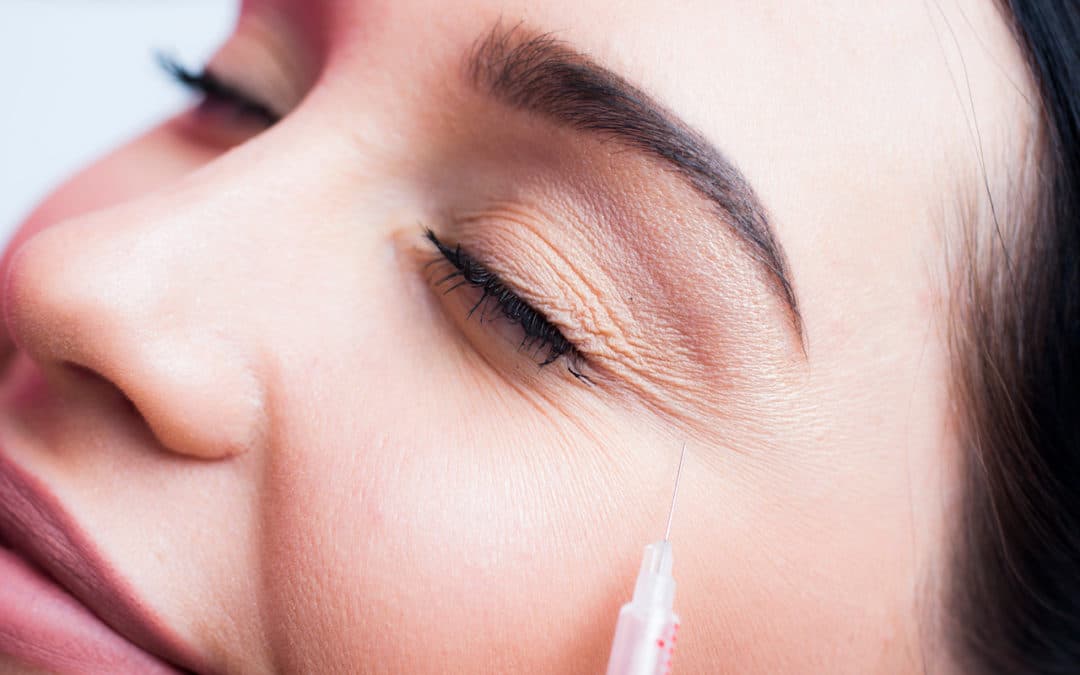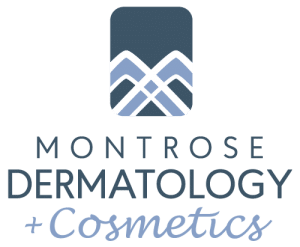Botox® is one of the safest facial rejuvenation treatments for fighting wrinkles and facial aging.
As an injectable, non-invasive treatment, it is widely preferred by a large population who either fear or cannot afford cosmetic surgery. It is particularly effective in smoothing crow’s feet at the corners of the eyes, the infamous “11” frown lines between the eyebrows, and forehead expression lines.
While Botox® used to be reserved for women over 40 who wanted to treat already formed wrinkles and fine lines, statistics now show that almost 30% of the women undergoing a Botox® treatment are under 30.
Indeed, the trend of preventative Botox® is booming.
Experienced Botox® practitioners have seen the positive effects of starting Botox® injections early in avoiding the formation of fine lines in the first place.
If you start Botox® early, you will need much less in the future.
But, what is the right age for starting Botox®? Is there too-soon and too-late for having a Botox® treatment?
What Is The Right Age For Starting Botox®?
The age you get Botox® will vary from person to person. Ask yourself the following questions:
- Do you want to prevent wrinkles or treat them? Preventative Botox® can keep any possible wrinkles and fine lines at bay.
- Do I see fine lines when my face is resting? Lines naturally form when you frown, smile, or make any other expression with your face. You should consider this wrinkle treatment when those expression lines begin to stay present once your face is back to a resting position. Most people see this happening in their late 20’s to 30’s.
- How much sun have I been exposed to? If the answer is “A lot” (whether it be because of a lifeguarding job or regular tanning sessions), you may be seeing fine lines and wrinkles appearing earlier than usual. Even if you haven’t seen many quite yet, it’s always a good idea to consult a professional dermatologist.
Botox® In Your 20s: Watch For The Signs Instead Of Rushing In
In the era of social media, especially Instagram, young generations are preoccupied with avoiding signs of aging. Botox® procedures have increased by 28% since 2010 amongst the 20-29 years olds, under the tag of preventative Botox®.
However, before the age of 25, it is unlikely that a person has any visible fine lines that could benefit from Botox®.
Fine lines naturally form around the mouth and the eyes when you smile or frown. These lines are called dynamic because they disappear once you stop smiling or frowning and the face relaxes. Later on, as the skin ages, these dynamic fine lines start turning into more or less deep permanent wrinkles.
So, as a common rule, when you start seeing fine lines at rest around your eyes or mouth, that’s when you should consider Botox® for the first time.
Before age 25, this is uncommon. After 25, though, some women will start seeing signs of aging. This is especially the case if they smoke, have important sun exposure, have fair skin, have a very expressive face and frown a lot, or if they are genetically predisposed to wrinkle.
At this point, having a Botox® consultation can make good skin sense.
It may not necessarily lead to Botox® injections yet, but an experienced professional will study your face and your facial expressions and tell you what kind of wrinkles you may develop. You could then agree to start Botox® injections at the specific areas, or watch your face and wait a bit longer.
Should I Have Botox® In My 20s?
Starting Botox® in your 20s without much consideration is not only risky for your finances. It also comes with a risk of achieving the opposite effect and aging your face earlier.
Indeed, if you have too much Botox® for too many years, the injected muscles become weak and get flatter, showing signs of muscle atrophy, especially around the eyes. The skin becomes thinner and looser. This makes your eyes seem aged earlier than they should.
Furthermore, when a muscle cannot move, the face may “recruit” another muscle to frown, provoking unexpected fine lines in more unusual, untreated areas of the face, like at the sides of your nose.
Expressiveness is part of a youthful face, so you should not rush for Botox® before your 30s. If, however, you have real reasons to be preoccupied with aging, discuss an adequate injection strategy with your dermatologist. Together you may opt for ultra-targeted micro-injections on very specific areas of your face, especially the forehead, brows, and corners of the eyes (Botox® works much less for the lines around the mouth).
Also discuss other, less expensive, anti-aging routines, such as using sunscreen and a hat under the sun, resting enough, avoiding stress, using antioxidants such as vitamins A and C, doing regular peels, etc.
Preventative Botox® In Your 30s
Most advocates of preventative Botox® agree that a woman in her early 30s is the ideal candidate for it. At this age, Botox® injections can prevent wrinkles from happening and push their appearance back.
After the age of 35, it may be too late to benefit from the preventive capacity of Botox®, especially if you have a very expressive face or fair skin, are genetically predisposed, or have unhealthy lifestyle habits such as using tan beds, overexposing yourself in the sun, or smoking.
For most people, the early 30s is when the first fine lines appear at rest, and that is when preventative Botox® can have the most benefits. This is when most women start Botox® treatments today, often as a birthday present when they enter the new decade in their life.
Starting Botox® In Your 40s
Many women prefer to postpone Botox® for a later age. However, this isn’t the best strategy either for your budget or for your skin.
Indeed, women that start Botox® earlier have fewer aging signs after their mid-forties and need less anti-wrinkle treatments overall, be it Botox® or not.
Women who have never had Botox® before have missed the preventative effects of early Botox® and need to address already established wrinkles and creases. Skin-wise, some damage has already become permanent. The skin is already thinner and static wrinkles are all the most obvious.
In such cases, Botox® alone may not suffice to restore a fresh face, and other procedures may be needed, like using fillers, laser, or even surgery.
Using Botox® After Your 40s: Part Of A Wider Treatment
If you consider starting Botox® after the age of 40, you should be aware that Botox® works better with the fine lines due to repetitive movement of the face (smiling, frowning, etc). It works much less for muscles that become heavy or sag from age.
So, if the problem is a sagging neck or deep lines around the mouth, it is probable that Botox® will not help much or at all. For such problems, your practitioner could propose complementary treatments to Botox®.
Why You Should Generally Not Be Afraid Of Botox®
Botox® is the commercial brand for the Botulinum toxin. Because of the word “toxin,” some postpone having Botox® injections out of fear for its side effects. Specifically, some fear ending up with an expressionless, “frozen” face.
This is a real risk if your practitioner has no real experience. With a trusted professional, however, injections are targeted and dosed to address wrinkles without freezing your muscles.
Does Botox® Have Any Side Effects?
Medical side effects are quite rare with Botox®.
With only 1 in 3,333 procedures presenting adverse reactions, Botox® is widely considered as a safe procedure. To put it in perspective, 1 in 100 people will have an adverse reaction to aspirin—a figure that rises up to one in three for asthma sufferers!
Side effects most commonly include swelling or redness for a few days, and bruising that can last up to a few weeks. Less frequent adverse reactions include dry mouth, neck pain, headaches, and blurred vision. All these go away with time, as the Botox® effect also regresses.
Suffering from the more severe side effects for many weeks could be a sign that Botox® is not for you in the long term. You should definitely discuss with your practitioner before repeating your Botox® treatment if you suffer marked adverse reactions.
Also, it is not recommended that pregnant or breastfeeding women follow through with this procedure.
Keep in mind that for a few hours after the treatment, you should not exercise or bend, in order for the injection to be absorbed in the right muscles and not transfer to neighboring ones. Do your Botox® injections when you know you can stay home and relax afterward!
While Botox® is non-invasive and only has mild side effects generally, it still is a medical procedure. Choose a trusted professional, checking that they have the necessary certification and extended experience in injecting Botox®. This will guarantee that your injections will be dosed and targeted correctly.
Think Your Botox® Strategy Early
The bottom line is this: If fighting the signs of aging is important to you, and if you think that wrinkles will make you unhappy in the future, it is better to discuss a Botox® strategy early on.
Always remember to treat your skin, not your age. Although age guidelines are useful, they are no more than a convenient rule-of-thumb. You may need Botox® earlier than others, or you may have great skin at 40 and need much less Botox® than others.
Have an initial consultation with your practitioner to study your face and make a diagnosis as to the adequate Botox® timeline. Discuss healthy lifestyle and skin routines that make good skin sense, and which should not be replaced by Botox®, but work along with it. Having your skin diagnosed early on will help determine the Botox® strategy that is perfect for you.
Botox® should not be taboo. But neither is it a magic needle that will solve all of your wrinkle- and face-aging problems.
Consider it as a powerful treatment that is part of a wider anti-aging strategy, and enjoy a fresh, age-appropriate, expressive face.


